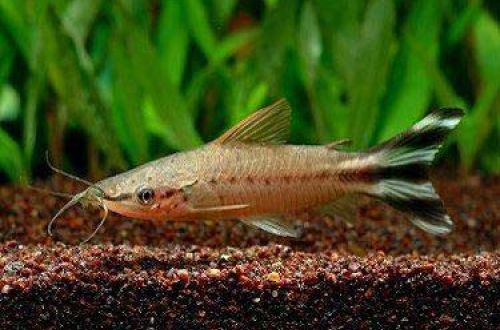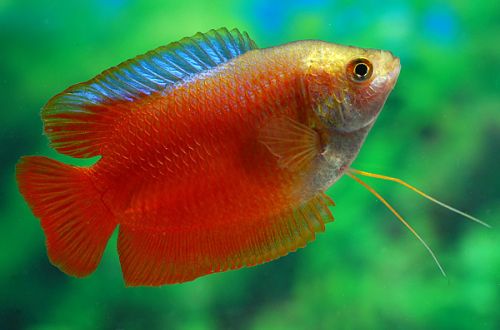
Flag-tailed catfish
The striped-tailed dianema or Flag-tailed catfish, scientific name Dianema urostriatum, belongs to the family Callichthyidae (Shell or Callicht catfishes). The fish is native to South America from the vast Amazon basin. The main population inhabits the middle basin in the heart of the Amazon rainforest. It occurs everywhere in small streams and rivers in the water column or in the bottom layer.

Description
Adult individuals reach a length of about 8 cm. In their appearance, this species is slightly similar to typical catfish, which have such common features as a body somewhat squeezed from above and a large head with a large mouth.
Differences in the morphology of the Flagtail catfish are explained by a different way of life. A significant part of the time it swims rather than spends on the bottom, therefore it has a strong body, well-developed fins and a pointed head.
A distinctive feature of the species is the striped tail pattern of alternating white and black horizontal stripes. The color is gray with dark spots.
Behavior and Compatibility
Mobile friendly fish. Prefers to be in a group of 3-4 individuals. Peacefully tuned in relation to other species. Compatible with many non-aggressive and non-territorial fish. For example, good compatibility is achieved with related Corydoras and vice versa, they do not get along well with such cichlids as Geophagus.
Brief information:
- The volume of the aquarium – from 100 liters.
- Temperature – 25-28°C
- Value pH — 6.0–8.0
- Water hardness – 5–15 dKH
- Substrate type – any dark
- Lighting – subdued or moderate
- Brackish water – no
- Water movement – light or moderate
- The size of the fish is about 8 cm.
- Meals – any
- Temperament – peaceful active fish
- Keeping in a group of 3-4 individuals
Maintenance and care, arrangement of the aquarium
The optimal aquarium size for this floating fish starts at 100 liters or 80 cm long on one side of the tank. The design must provide areas of open water for swimming and places for shelters. As the latter, thickets of plants, snags, bark, shells and large leaves of some trees are used. The lighting is subdued. A good means of shading will be clusters of floating plants.
Successful long-term management depends on maintaining stable water conditions within acceptable ranges of key hydrochemical parameters (pH and dGH). Timely maintenance of the aquarium (replacing part of the water with fresh water, removing organic waste) will prevent the accumulation of fish waste products.
Food
Acclimatized fish and those that have appeared and grown in an artificial environment, as a rule, are accustomed to eating popular dry food. However, live or frozen foods (brine shrimp, daphnia, bloodworms, etc.) will be a useful addition.





